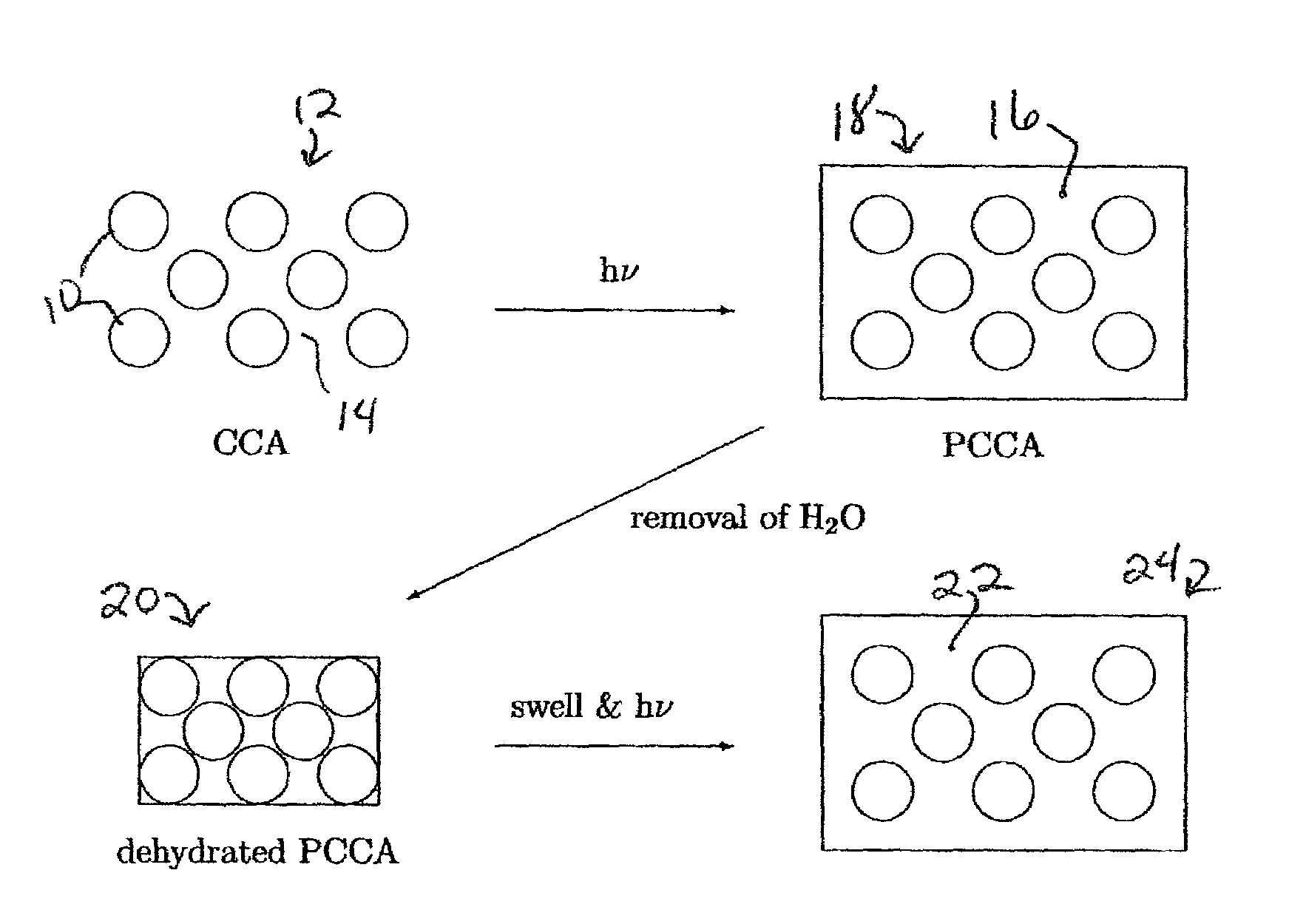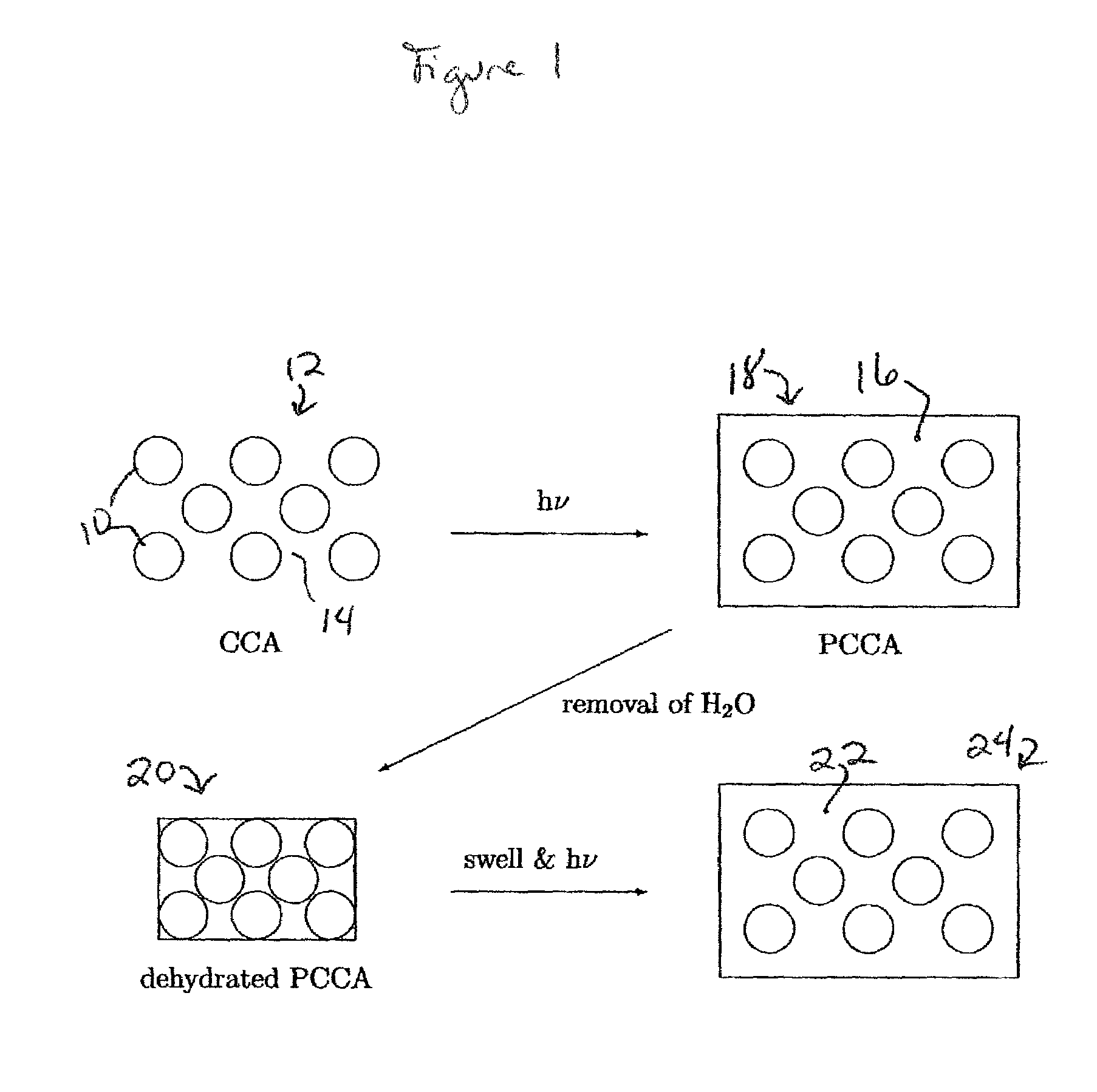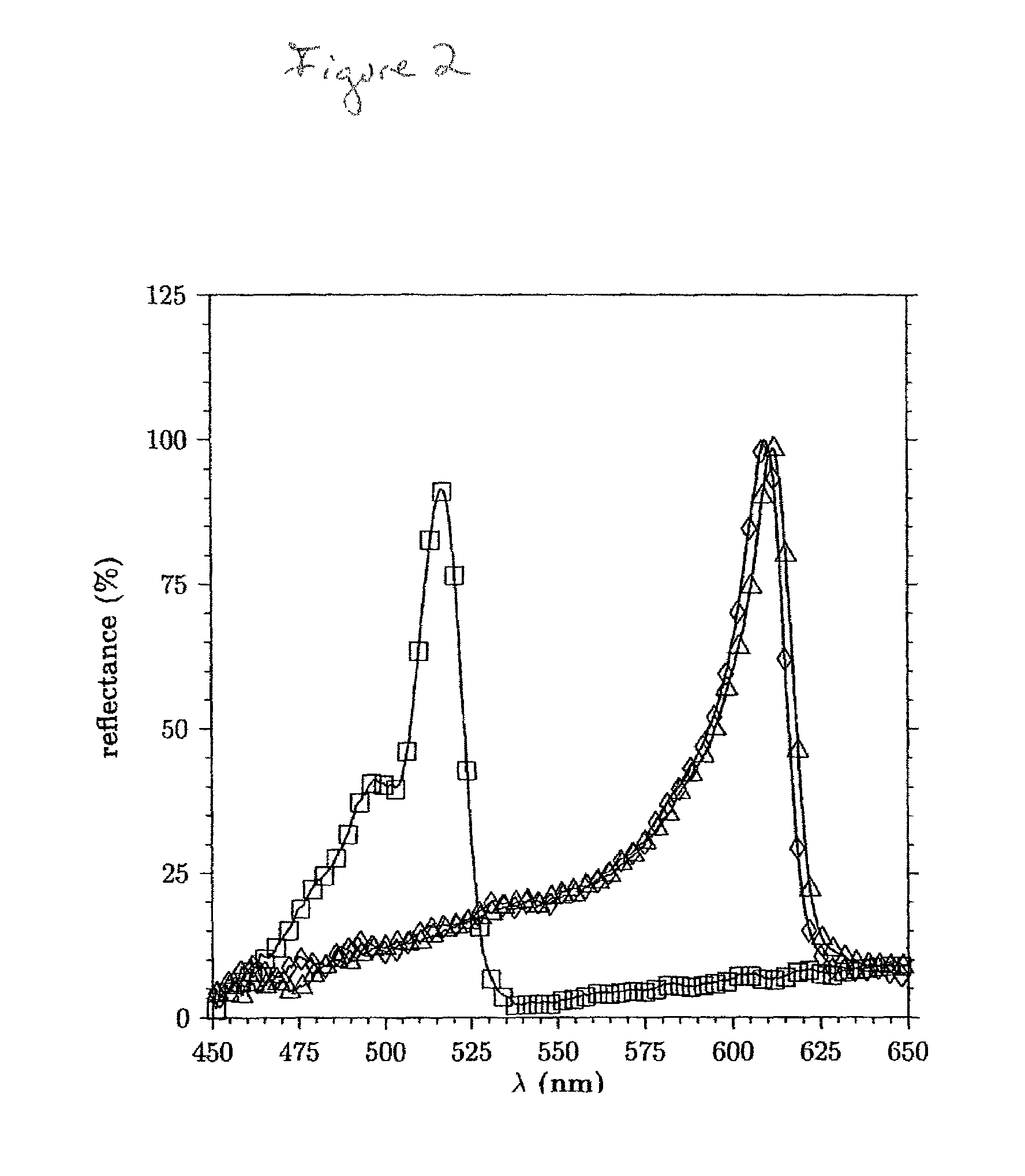Essentially water-free polymerized crystalline colloidal array composites having tunable radiation diffracting properties and process for making
a technology of crystalline colloidal arrays and composites, which is applied in the field of tunable radiation filtering, can solve the problems of fragility and propensity for significant changes in optical performance with water content, and disturb the practical application of ccas in photonic devices,
- Summary
- Abstract
- Description
- Claims
- Application Information
AI Technical Summary
Benefits of technology
Problems solved by technology
Method used
Image
Examples
example 1
[0081]Monodisperse crosslinked polystyrene particles were prepared using an emulsion polymerization procedure which involved mixing styrene monomer with divinylbenzene, a cross-linking agent, sodium lauryl sulfate, a surfactant, and potassium persulfate, a free-radical initiator for initiating polymerization. The resulting particles were dialyzed against deionized water and then shaken with an excess of mixed bed ion-exchange resin. After cleaning, the particle diameter was measured to be 109±26 nm. The cleaned suspension with then diluted with deionized water until an angle dependent iridescence was observed. Drying a known mass of the suspension in an oven at 80° C. overnight then under vacuum for two days resulted in a calculated particle density of 2.6×1014 cm−3.
[0082]The crystalline colloidal arrays which formed in the deionized water were encapsulated in a hydrogel matrix prepared by an in situ photopolymerization procedure. The matrix materials included a monomer of poly(ethy...
example 2
[0084]A hydrogel PCCA film made in accordance with Example 1 was removed from the quartz plates and allowed to air dry for two days and then placed in a vacuum oven at 35° C. The resulting clear film was then swollen in a solution of 2-methoxyethyl acrylate for two days. To this solution, ethylene glycol dimethacrylate and DEAP was added and the formulation was crosslinked by a twenty-minute exposure to a UV lamp. All chemicals were purchased from either Aldrich or Acros Organics.
[0085]FIG. 2 is a reflectance spectra of the composite of the present Example collected on an Ocean Optics PC2000 fiber optic spectrometer taken at normal incidence in an initial stress-free state, under a compressive loading, and upon removal of the applied stress. In the initial stress-free state, the position of the band stop is at 610 nm. Upon applying a 145 kPa compressive stress, the band stop shifts down to a wavelength of 517 nm, a 93 nm variation. Additional compressive stress resulted in increasin...
example 3
[0086]A hydrogel PCCA film made in accordance with Example 1 was removed from the quartz plates and allowed to air dry for two days and then placed in a vacuum oven at 35° C. The resulting clear film was then swollen in a solution of 2-methoxyethyl methacrylate for two days. To this solution, ethylene glycol dimethacrylate and DEAP was added and the formulation was crosslinked by a twenty-minute exposure to a UV lamp. All chemicals were purchased from either Aldrich or Acros Organics.
PUM
| Property | Measurement | Unit |
|---|---|---|
| compressive stress | aaaaa | aaaaa |
| diameter | aaaaa | aaaaa |
| diameter | aaaaa | aaaaa |
Abstract
Description
Claims
Application Information
 Login to View More
Login to View More - R&D
- Intellectual Property
- Life Sciences
- Materials
- Tech Scout
- Unparalleled Data Quality
- Higher Quality Content
- 60% Fewer Hallucinations
Browse by: Latest US Patents, China's latest patents, Technical Efficacy Thesaurus, Application Domain, Technology Topic, Popular Technical Reports.
© 2025 PatSnap. All rights reserved.Legal|Privacy policy|Modern Slavery Act Transparency Statement|Sitemap|About US| Contact US: help@patsnap.com



